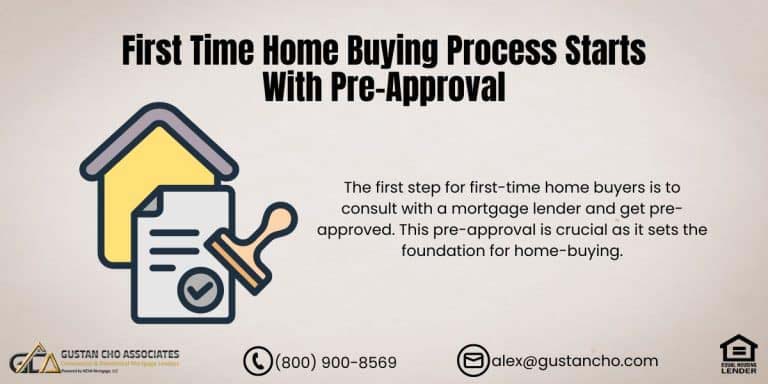This guide covers how to get the lowest mortgage rates on home loans. Mortgage loan officers who have been in the business for several years will tell you the number one question they hear is, “What are your rates today?” And it’s also typical for consumers to begin shopping around for a mortgage company. One of the first things they ask is, “What are your rates today?” Consumers have long been taught to shop around for mortgage rates. Many want to know how to get the lowest mortgage rates. John Strange, a senior loan officer at Gustan Cho Associates and an associate contributing editor at GCA Forums News, says the following about how to get the lowest mortgage rates on home loans:
Rate aggregators spend heavily on ads promoting their sites to consumers, where multiple lenders advertise their interest rates. However, visiting such sites can be unclear, and the consumer turns away, not knowing much more, if any, than they did before logging onto these sites.
Several years ago, before the mainstreaming of Loan Level Pricing Adjustments (LLPAs), an interest rate was pretty much what it was. There was a one-size-fits-all 30-year fixed rate. A mortgage loan officer would receive the company’s daily interest rate sheet listing various rate and point combinations for their loan products. Adjustments for loan size, such as for jumbo loans, were made, but there were very few rate variances. In the following paragraghs, we will cover how to get the lowest rates on your home loan.
How to Score the Lowest Mortgage Rates in 2025
Landing the lowest mortgage rate can save you a small fortune. Because rates rise and fall with the economy, knowing how to tune up your finances and talk to lenders matters. This simple guide walks you through tried-and-true tips to grab the best rate in 2025, whether buying your first house or refinancing the one you already own. From boosting your credit score to comparing multiple lenders, you’ll find easy steps that cut your rate and save you money.
Why Mortgage Rates Matter
The interest rate on your mortgage shapes your monthly bill and the overall cost of borrowing money to buy a house. A half-point change in that rate can add or save thousands over a thirty-year loan. Picture this: a $300,000 mortgage at 7% will cost far more in interest than the same loan at 6.5%. That smaller rate slice could mean more than $30,000 in your pocket by the finish line. On top of that, a lower rate stretches your budget, making a bigger house seem doable today instead of later. As we look toward 2025, Fed moves, inflation, and housing patterns will likely push rates up and down again, so shoppers who lock in early often win.
Want the Lowest Mortgage Rate? Here’s How to Get It
From improving credit to choosing the right loan type—we’ll guide you step-by-step to the best rate.
Key Factors That Affect Mortgage Rates
To chase the best rate, it helps to know what goes into the price lenders set for you. Important pieces include your credit score, how much cash you bring versus how much the house costs (LTV), your monthly debt compared to your income (DTI), the kind of loan you pick, and how long you plan to borrow. On top of those, lenders add or trim fees through Loan-Level Price Adjustments, especially for borrowers they see as riskier. By fine-tuning these pieces, you give yourself a fairer shot at the lowest rate on the market.
Proven Strategies to Get the Lowest Mortgage Rates
If you’re ready to buy a home in 2025, these simple steps will help you snag the lowest mortgage rates, whether it’s your first purchase or you already own a house.
How to Get the Lowest Mortgage Rates: Boost Your Credit Score
Your credit score is a leading factor lenders look at when setting your mortgage rate. People with a score around 740 or above usually see the best deals. A higher score tells banks you are less risky, so they may cut or drop those extra fees called LLPAs.
To lift your score:
- Pay down pricey debts like credit cards so your credit utilization number looks healthy.
- Always pay bills on time.
- That record is the biggest part of your score.
- Order a free credit report at AnnualCreditReport.com and fix any errors you find.
- Wait to open new credit cards or shut old ones until after you get the loan, since those moves can damage your score.
- Set your sights on at least 740.
- Nudging your score from 680 to 700 can trim LLPAs and mil-rate costs.
Increase Your Down Payment
- The bigger your down payment, the lower your loan-to-value (LTV) ratio.
- LTV is just the loan amount divided by what the home is worth.
- A smaller LTV tells lenders you have more equity up front, which makes them feel safer and can earn you a lower interest rate.
- For instance, a 20 percent down payment on a $400,000 house reduces the LTV from 95 percent to 80 percent.
- That change may let you skip costly private mortgage insurance and cut extra loan-level pricing adjustments.
If you want a bigger down payment:
- Set up a separate savings account and add to it each month, even if the amount feels small.
- Look into state or local programs that give first-time buyers grants or second mortgages for the down payment.
- Ask family members if they can gift you money; many lenders accept this as long as it is well documented.
A 20 percent down payment is the gold standard, but putting down even 10 percent can still improve the rate you get.
How to Get the Lowest Mortgage Rates: Lower Your Debt-to-Income Ratio
Your debt-to-income (DTI) ratio looks at all your monthly bills compared to your monthly pay. Lenders usually want your DTI below 43 percent; if it sits around 36 percent or lower, they may offer you sweeter terms.
To trim your DTI:
- Focus first on high-interest debt, such as credit cards or personal loans.
- Paying these off cuts the balance and the interest you lose each month.
- Hold off on new obligations like car loans or new store cards once you start house shopping, since every added payment raises the DTI you report to lenders.
- Boost your monthly pay with a side job, or ask for that overdue raise, and watch your debt-to-income (DTI) ratio improve.
- A cleaner DTI signals to lenders that you handle money well, so they trim the risk-based fees they would have charged.
Shop Around and Compare Lenders
- Mortgage rates can vary widely from one lender to the next, even for people whose credit scores and incomes appear almost identical.
- By 2025, thanks to websites and helpful brokers, tracking those differences will take only a few clicks.
To hunt down the best deal:
- Ask three to five lenders, banks, credit unions, and online lenders for fresh rate quotes.
- Check the annual percentage rate (APR), which bundles interest and upfront fees.
- Partner with a mortgage broker who is handy with many lenders and skilled at negotiating.
- Inquire about lender credits.
- Some companies waive fees or trim rates to win your business.
- All that legwork can shave 0.25 percent to 0.5 percent off your rate, a change that can save you thousands over the life of the loan.
Weigh Your Loan Type and Term
The kind of loan you pick and how long you borrow money for shape the interest rate you get. Fixed-rate mortgages promise steady payments for the life of the loan, while adjustable-rate mortgages (ARMs) often start lower but can climb later. Loans that last 15 years usually have better rates than 30-year options, but the monthly bill is bigger.
To find the choice that fits you best:
- Choose a fixed-rate loan if you want sure payments, especially when today’s rates could rise higher.
- Look at an ARM only if you plan to sell or refinance in a few years, and be ready for a possible rate jump.
- Ask about government-backed loans such as FHA, VA, or USDA.
- These can offer better deals to higher-risk borrowers.
- VA loans, for instance, often have lower rates and skip PMI for eligible veterans, while FHA loans are aimed at buyers with modest credit scores.
Consider Paying for Discount Points
- If you want to immediately bring your mortgage rate down, paying for discount points is one option.
- Each point usually costs 1% of your total loan amount and knocks about 0.25% off the interest rate.
- On a $300,000 mortgage, stumping up $3,000 could save you hundreds over the life of the loan.
- That payoff works best when you plan to stay in the house for many years.
- Before you decide, run the math to see how long those savings take to cover the fee and ensure the deal clicks for you.
Lock in Your Rate at the Right Time
- Mortgage rates bounce around daily because of big-picture inflation and Federal Reserve policy.
- A rate lock holds your chosen number for a limited period, often 30 to 60 days, while the lender finishes underwriting.
- Watch market trends through sites like Freddie Mac’s weekly survey or everyday financial news to make the most of that hold.
- Talk to your loan officer about grabbing the lock on a brief dip, especially during wild swings.
- You might also ask for a float-down option, which lets you snag a lower rate if it drops again before closing.
- Good timing here can save thousands over the life of the loan.
Dodge Risk-Based Adjustments (LLPAs)
- Loan-Level Price Adjustments, or LLPAs, can quietly add to your rate when lenders see red flags.
- A low credit score, a high loan-to-value (LTV) or debt-to-income (DTI) ratio, financing an investment property, or pulling cash out can all trigger a surcharge.
To head off these hits:
- As mentioned, lift your credit score and save a bigger down payment.
- Buy a house you plan to live in, not a vacation or rental spot.
- Skip cash-out refinances.
- They usually get pricier adjustments.
- Ask your lender about potential LLPA waivers, especially the ones set for first-time buyers in 2025.
- Knowing and fixing LLPA triggers can greatly impact your final rate.
Extra Tips for First-Time Homebuyers
Brand-new buyers often juggle a tighter budget, yet they still have chances to land lower rates. Look into state and local programs that offer below-market interest rates or help with the down payment. FHA loans, for instance, are kinder to folks with modest credit or smaller savings. You might also team up with a HUD-approved housing counselor to map out the journey and spot ways to save on your rate.
Lock In a Low Rate Before It Rises Again
Timing, credit, and loan structure all matter. Let’s build a strategy to secure your best rate possible.
The Role of Economic Conditions in 2025
By 2025, mortgage rates will still ride the ups and downs of inflation, Federal Reserve moves, and the mood of the housing market. The Federal Housing Finance Agency (FHFA) closely monitors conforming loans so Fannie Mae and Freddie Mac don’t jitter and cause wider chaos. Because of that oversight, knowing how the economy behaves can signal when it’s smart to push the apply button or lock in your rate.
Picture This: If inflation finally eases, rates might settle or even slip, offering a cheaper borrowing cost.
Common Mistakes to Avoid
To score the lowest mortgage rate possible, dodge these common blunders:
- Skipping a look at your credit report lets hidden errors sneak up on you.
- Getting quotes from just one lender shuts the door on better deals.
- Racking up a new car loan or credit card debt raises your debt-to-income ratio.
- Overlooking closing costs wipes out the savings you thought you earned with a lower rate.
- Letting your rate float instead of locking opens you to sudden market swings.
Take Action to Lock In the Lowest Rates
Getting ready now pays off if you want the cheapest mortgage rate in 2025. Start by boosting your credit score, saving a bigger down payment, and trimming your debt-to-income ratio. Then, shop different lenders, ask about all loan types, and think about buying discount points if you plan to stay in the home for a long time. Keep an eye on financial news to know when rates dip, and lock yours in before they bounce back. Following these steps can cut your monthly payment and make owning a house feel doable. For up-to-date numbers and tips, visit Fannie Mae, Freddie Mac, or the Consumer Financial Protection Bureau. Ready to move? Check your credit and reach out to three lenders this week.
How to Get The Lowest Mortgage Rates: Variable Factors Affect Rates
Today, however, it’s much different. A loan officer can quote an interest rate, but the rate can change based on the type of mortgage loan. For example, VA loan rates can differ slightly from those reserved for conventional loans. The amount of down payment and a credit score can also affect the interest rate . That means when consumers shop around for an interest rate, it might take some time to answer a few questions before a solid rate quote can be provided.
That’s why interest rate aggregators are more interested in getting a mortgage lead to selling instead of providing information that the consumer can use. That’s why a loan officer should first advise a “rate shopper” that the interest rate quoted is for a specific type of loan with a specific number of points.
For example, a consumer calls and asks about rates. The loan officer gathers some basic information and quotes a rate with zero points with a 30-day lock period. The loan officer also advises the consumer that the interest rate quoted is subject to verification of the credit scores, income, and down payment funds.
How to Get the Lowest Mortgage Rates: Shopping Rates with Different Lenders
Further, consumers must know that mortgage companies price their loans based on the same indices. That means one lender can’t have a 30-year rate at 2.50% and everyone else is at 3.50%. For a conventional loan underwritten to Fannie Mae guidelines, the specific index is a mortgage bond traded by investors daily. If there is a sizable variance at one lender compared to others, there’s something not quite right. Even hybrid loans from different mortgage companies share the same index.
Act as an Advisor on How to Get the Lowest Mortgage Rates
A great way for a loan officer to “handle” a rate shopper is to act as an advisor. Let’s role-play momentarily and see this in action: the phone rings, and the loan officer answers. The caller, Bill, wants to know the current rates for a 30-year fixed-rate loan with no points. The loan amount is $250,000, and the caller will pay 20% of the sales price. The loan officer quotes a 3.75% with no points and one origination fee. Bill then responds, “Thank you for your time, but I just got a quote for 3.0%, can you match that or beat it?” The loan officer knows that’s impossible, but arguing with a prospective client isn’t wise. Instead, the wise loan officer will ask a few questions.
“Can you lock that rate in today?” Of course not. Lenders today don’t lock in rates without a completed loan application. Too many blown locks make the secondary department a little fussy. Bill will likely say he isn’t sure because that’s what the other lender said their rate was.
The wise loan officer might say, “That’s a very competitive rate given what you’ve told me, and there is no way I can match it. I’ll tell you what. Please give me your contact information, or call me back after you’ve spoken with the lender and asked about locking in. If you can’t lock in, then this very low rate might not be available when it’s time to lock.. The other competing lender will then validate what the loan officer told the caller: rates can only be guaranteed after a completed loan application, review of credit, and a property address. The prudent loan officer can talk more about the situation by advising the client and not getting into a price war.
Case Scenario
For example, where is the property located? What is Bill’s primary goal: getting the lowest rate or saving more on long-term interest? Does Bill intend to hold onto the property for the long term, or do you think this is more of a shorter-term transaction? By becoming an advisor and even problem solver, the wise loan officer can often beat the rate-shopping merry-go-round instead of simply chirping out today’s rates. Furthermore, in this scenario, Bill will see the loan officer as informative, upfront, and honest. Thus, more often than not, Bill will call back and go forward with the deal.
Act as a Problem Solving Using the Catch System on How to Get the Lowest Mortgage Rates
The “CATCH” system is an acronym for an effective sales system that is a “win-win” for the client and the loan officer. This system works best for loan officers in inbound refinance calls, but it can also work for purchases. In the “CATCH” system, a loan officer digs beneath the surface to discover the client’s pain point and then focuses on solving that problem.
When the loan officer becomes a problem solver, instead of simply representing the interest rate and loan terms, the interest rate and fees often become a non-issue for most borrowers. In the “CATCH” system, the “C” stands for Clarify why the borrower has contacted you.
There is a reason why the borrower thinks he has reached out to you, and the real reason the borrower has reached out to you. You can go ahead and find out why the borrower has contacted you. The “A” means to “assign an agenda” to the borrower and get their permission to proceed.
Lowest Mortgage Rates Start With Smart Planning
Learn how small moves—like paying down debt or changing loan terms—can lead to big savings.
Communicating With Your Loan Officer on How to Get the Lowest Mortgage Rates
Ideally, the loan officer would small-talk with the borrower and ask a few cursory questions to establish a rapport. After this, the loan officer wants to get to the nitty-gritty and find out the real reason that is often beneath the surface as to why the borrower reaches out. To establish this, the loan officer would say to the borrower, “I’m going to ask you some questions, and all I ask is that you answer them honestly and to the best of your ability. Is this fair?” The borrower almost always grants permission for the loan officer to continue.. Thus, an agenda (the questions) has been assigned, and the borrower has given the loan officer permission to work through his agenda.
The “T” in “CATCH” stands for “talking the borrower through the pain.” The loan officer does this by asking questions and getting the borrower to expound on his yes/no answers as much as possible without being annoying. This helps the loan officer drill down on the borrower’s pain point.
When the pain point is most clear to the loan officer, it’s on to the next letter of the acronym of CATCH, which is the second “C” in CATCH and stands for “Close”. When the borrower has revealed their pain point to you, the loan officer asks the borrower for their business. Most of the time, the borrower is ready to go. Sometimes, however, they have objections.. For example, a borrower might say I am waiting to get paid on Friday and cannot afford to pay for my appraisal until then. He might also say I will talk to one more lender before deciding. The “H” part of “CATCH” is to “help” your client decide to go with you. One method of help is to offer a scholarship, such as paying for their appraisal. For example, you would tell the borrower that if they signed their disclosures and got their documents in by the end of business TODAY, you would pay for their appraisal and close them in 30 days. In this case, the loan officer has successfully overcome the objection of the borrower shopping for another lender or waiting to start the process when he gets his paycheck so that he can pay for his appraisal.
Case Scenario Example On How To Get The Lowest Mortgage Rates Home Loans
Let’s take an example. John Smith calls the loan officer, stating he is interested in refinancing his mortgage. On the surface, John Smith says he is interested in paying off some debt and maybe getting a lower monthly payment. John isn’t telling the loan officer the following: One week earlier, his son, Mike, an outstanding student-athlete, got into a prestigious private high school on a partial scholarship. The tuition is $12,000 per year for high school:
Mike’s scholarship covers ½ of that $12,000, leaving $6,0000 for which John will be responsible, or his son’s dreams will be dashed. John has worked out a monthly payment plan with the high school at $500. John’s wife, Mary, has been so stressed over this new $500 per month on the family budget that she hasn’t been able to sleep.
The problem is that John’s budget is stretched due to a car accident 2 years ago that he got into, and he is still paying off a medical bill as a result. John also pays only the minimum on two credit cards at a high-interest rate. John only makes minimum payments due to his credit card’s high interest rates and finance charges. John had a car accident a few years ago, and as a result of the car crash and subsequent medical bills, John has some late payments on his credit card, thus hurting his credit.
Bankruptcy And Housing Events Do Not Impact the Ability How to Get the Lowest Mortgage Rates for Home Loans
Also, John had to file for bankruptcy 5 years ago, which remains on his credit report. John has also read in the newspaper that home values in his area have remained stagnant. Due to his credit issues and perceived stagnant home values, John didn’t think refinancing was an option, so he had not entertained it earlier. A few Google searches on “refinancing after a bankruptcy” have brightened his hopes, and he is desperate for a solution to his problems. John is a proud man who has worked hard and doesn’t like to complain about his problems, much less share them with a stranger.
Someone rarely reaches out to refinance to get a lower interest rate and pay off a few bills. Someone usually reaches out to refinance because they have a pain point that needs to be addressed.
At the surface, this is a normal American man with a wife, some kids, a job, and a mortgage. John says he is interested in paying off some credit card debt and maybe lowering his monthly payments, a common reason to refinance. Beneath the surface, what is the real reason why John has reached out to you? What are John and his wife discussing in private? What is their “pillow talk”? John has a talented and hard-working child who may be unable to attend his dream high school. John’s wife is so stressed out about it that John is worried about her health as well as the overall status of his marriage. Now these are real problems. Pain is a strong motivator to act.
Total Honesty With The Loan Officer on How to Get The Lowest Mortgage Rates Home Loans
So, how does a loan officer extract this vital and personal information from a client who isn’t all that keen on sharing his deeper secrets or even shame? Simple, by using the CATCH system. The loan officer must first and foremost take an interest in the client. Dale Carnegie’s principle of becoming genuinely interested in another so that person becomes interested in you works here. Second, ask a lot of questions.
Questions lead to confessions. The loan officer wants confessions to detect the problems below the surface that need solving. As the client answers these questions, the loan officer should mine the data by taking copious notes. Last but not least, the loan officer should listen instead of talking to the client.
An adage in sales rings true: “He who talks the least makes the most”. It behooves a loan officer to ask a question, then mute his phone and intently listen to a client, instead of waiting for his turn to talk. It is easier said than done, but it comes with practice. The loan officer can extract John’s pain points by showing genuine concern for John, asking questions, and listening. After learning John’s pain points, the loan officer would get to work and find a suitable refinance loan program.
Loans Programs That Offer Borrowers How to Get the Lowest Mortgage Rates on Home Loans
Many FHA programs offer loans to borrowers with credit scores as low as 580, even with bankruptcies and collections, especially with direct lenders with no overlays.
- By setting John up with one of these programs, the loan officer can probably pay off John’s high-interest credit cards and get rid of his medical bill
- This could easily free up the much-needed $500 per month John needs to put his kid through the high school of his dreams and help de-stress his wife and marriage
Do you think John will beat up the loan officer over interest rates if the loan officer is solving all of his financial problems? Probably not. As a loan officer, the idea is to position yourself as a problem solver, not just an “order taker”.
Don’t Settle for a High Mortgage Rate
We’ll help you shop smarter, negotiate better, and qualify for the best rate based on your unique profile.









